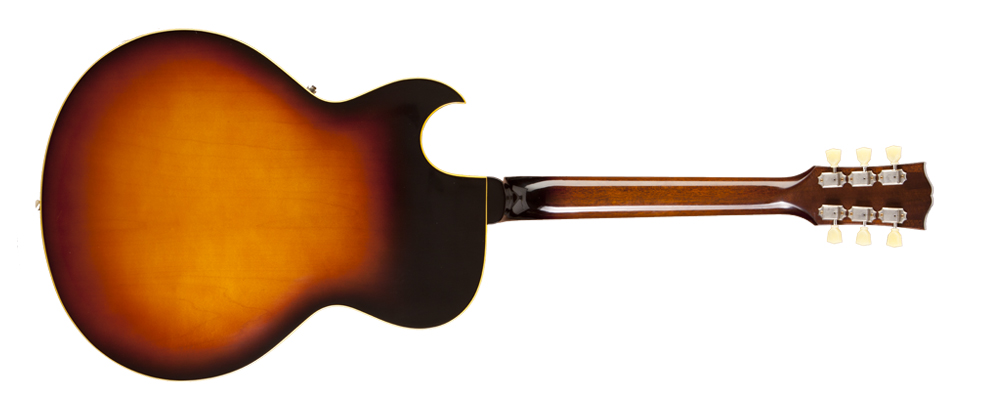

I noticed a discoloration in the neck on the bass side that appears under the finish, which I assume is the blemish that probably warranted the “SECOND” designation. I’ve seen quite a few of these from the 1970s and early 1980s, and there is a lot of discussion amongst vintage guitar collectors as to whether or not this was a conspiracy to sell more guitars. The “SECOND” stamped onto the back of your headstock underneath the serial number indicates that the guitar was shipped from the factory with some sort of finish blemish or other imperfection, and that it was sold at a discounted price with a full factory warranty. A beautiful Gibson ES-175D in Vintage Sunburst Visit our website for more Gibson serialization information. Production numbers started at 001 each day in Kalamazoo and 501 each day in Nashville. During this time, Gibson had two factories open-the original in Kalamazoo, Mich., and a new one in Nashville, Tenn. The last three digits are the production number from that day. The second, third, and fourth digits indicate the day of the year your guitar was built based on the Julian calendar. The first and fifth digits indicate the last two numbers of the year your guitar was built: in this case, 1980. The serial number on your guitar is 8150001X with “SECOND” stamped below it.

In 1977, Gibson finally standardized their serialization system with an eight-digit format that reads like this: YDDDYNNN. Your guitar is a Gibson ES-175D produced in 1980. It’s always a treat when players bring in gear to our office for evaluations, appraisals and identification, and I especially enjoy it when the instruments are this clean! Let me start by telling you that aside from a good cleaning and new strings, this guitar needs nothing to become a full-time player. I still don’t play so I’d like to sell them, and I’m curious as to exactly what I have and how much they are worth. My father passed away last winter and I found them when I was cleaning out his closets. A few years later, I gave the guitar and amp to my father, but he played them very little as well. I bought this Gibson guitar and Fender amp new in the late 1970s or early 1980s and only played them a few times. Unfortunately, some of the information in this article cannot be seen in the pictures. Both pieces were in our offices, so I was able to inspect them personally.

Part one-found in last month’s issue- featured the Fender Princeton Reverb.

Note: This is the second of a two-piece article.


 0 kommentar(er)
0 kommentar(er)
